I’ve been on a bit of a Fallon McElligott tear recently.
American awards annuals were stuffed with an obscene amount of their work, for over two decades.
As varied as the work is, whether it’s Rolling Stone’s Perception/Reality campaign, Porsche’s ‘About as fast as you can go without eating airline food’, BMW Films, Miller’s ‘Evil Beaver’, Citibank’s ‘Live Richly’, it all has that same joyous vibe.
You can sense that people enjoyed creating it.
So expect a bunch of Fallon content heading your way soon.
First up is a chat with writer George Gier.
Hey George, what was the first ad that made an impression on you?
I was a child of the 60’s so I grew up during the creative revolution.
There were so many strategically smart and creative ad campaigns, it’s hard to say which is the first one I remember.
However, one still sticks out to this day: Benson and Hedges’ “Disadvantages” campaign.
Yes, it was for cigarettes, but cigarette advertising was allowed on TV back then so we thought nothing of it in that regard.
What stood out then, as it still does today, was the simplicity of it.
They took a product differentiator (a longer cigarette) and filmed short vignettes of how that could be considered a disadvantage because people were used to shorter cigarettes.
They played these vignettes to a catchy theme and they achieved what all great advertising would love to achieve: a simple product demonstration with an intelligent and engaging voice.
How did you learn to write ads – ad college?
I learned how to write ads by studying great ads.
I hunted down awards annuals, trade magazines and scoured periodicals for engaging, well-constructed ads.
When I graduated college and was trying to break in, I tried to get my hands on anything that was highly regarded in the industry.
At that time, Fallon McElligott Rice was just breaking onto the scene and as a midwestern kid, I was lucky to be able to see and study a lot of their work.
How did you end up working there?
I was 25 and working for a small suburban agency south of Chicago, Illinois writing real estate ads for apartment buildings.
I had been consuming the award annuals and reading anything I could get my hands on regarding
advertising.
I noticed that the most interesting and thoughtful work was coming out of this small agency in Minneapolis called Fallon McElligott Rice, and to a writer, their work spoke to me.
But FMR was worlds away to a kid with nothing but a dream and a spec portfolio, so I stayed close to home.
When I started making the rounds in Chicago, I interviewed with Mike Faems who was running Y&R.
He took a look at my book and gave me some very encouraging words.
He said, “You really shouldn’t be interviewing in Chicago, this is a Minneapolis kind of book. You need to go up there.”
So, I saved my money, borrowed my brother’s car, got my grandmother’s AAA coupon book (to save money on a hotel), and set out for Minneapolis.
I had 10 “informational” interviews set up over a five-day span with FMR locked in for mid-week.
When I got there, I saw Rod Kilpatrick and to this day I remember nothing from that interview other than I knew this was the place I wanted to be.
He told me to call him if I got any other offers, so I had a feeling he liked my book.
When I got home, I had to talk my wife into spending $125 on an answering machine to field calls while I was at work.
We didn’t have the money, but the investment paid off because the day after I hooked it up, I got a call inviting me up to FMR for more interviews.
I was impressed to be flown up there and put in the Embassy Suites next door.
It seemed like the big time to me. With book in hand, and a hand-me-down suit I borrowed from my uncle, I was led through a gauntlet of interviews.
First Rod again, then Bill Miller, then Pat Burnham and finally the MAN himself, Tom McElligott.
Tom was quiet as he paged through my portfolio and I only really remember him asking me one question: “How much do you want?” I replied, “My salary doesn’t matter. All I want is to do great work.”
He looked up at me and smiled.
A few days later I got a call with an offer.
My life had been changed forever.
What a huge step up in class, were you anxious when you sat at your typewriter those first few weeks?
I remember high-tailing it up to Minneapolis.
My wife and I packed up, moved, and found an apartment in a few days, after which I dutifully reported to work.
When I got there, I didn’t get one assignment for four months.
Four long months. Tom made me sit around and watch while others created legendary ads and campaigns.
I made it a point to go into Tom’s office every Friday afternoon and tell him that I hadn’t done a thing all week and I would love to get my first assignment.
I don’t know if he did this on purpose (to make me hungrier) or if he had hired me in advance of work he thought was forthcoming, but I was a persistent little bugger and he finally gave me a chance.
My first ad was for WFLD and it was really the creation of Houman Pirdivari.
As we worked together on an ad to promote the Gene Kelly classic, Singin’ in the Rain, I must have written a hundred lines. All much too intellectual. Finally, Houman, being the free-wheeling creative that he is, came up with this irreverent idea and I knew well enough to step out of the way.



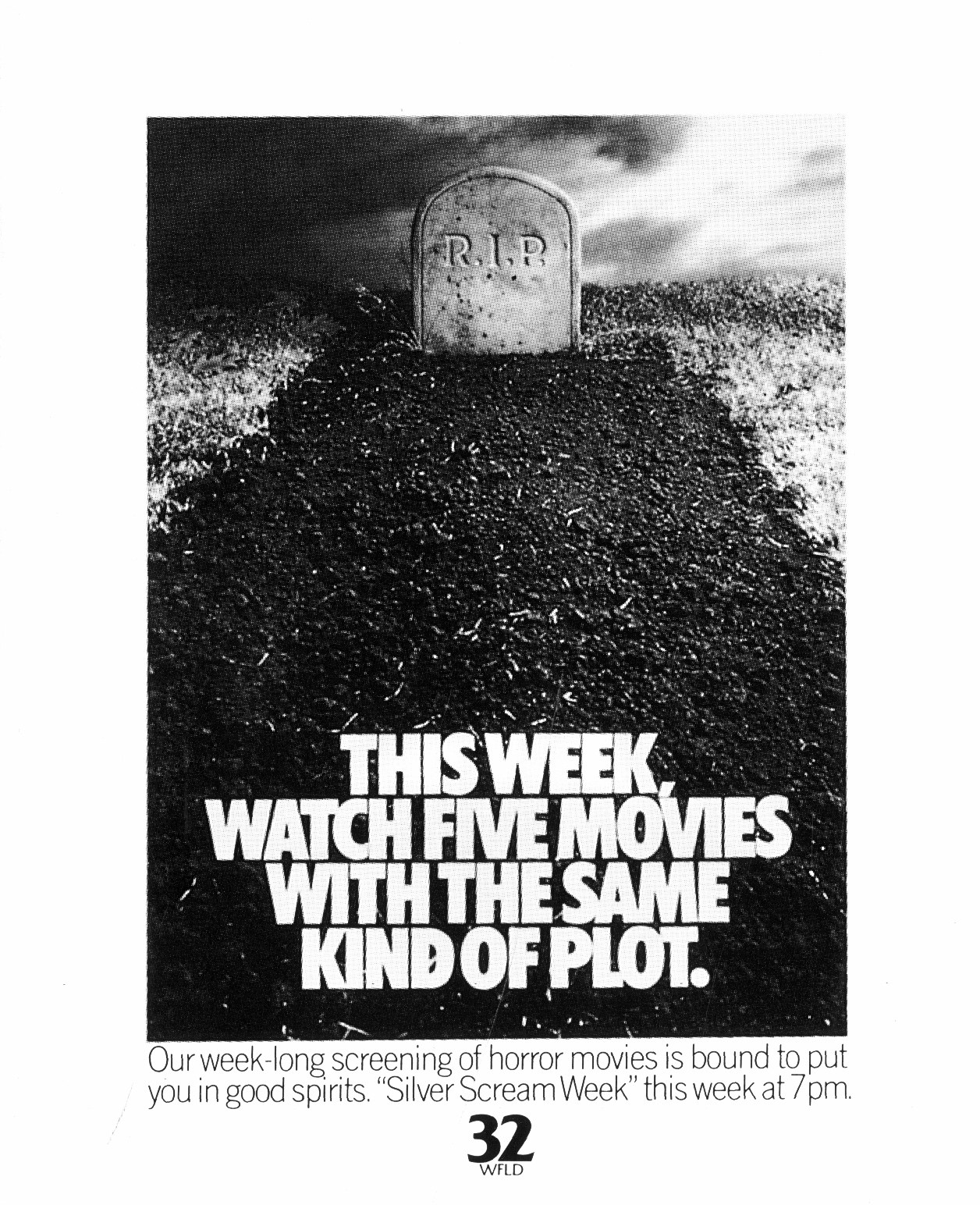
What was it like presenting work to Tom?
Tom would sit in his office at a round table that was buried under piles of papers, layout and storyboards. (I swear it was never clear.)
He nervously watched as you would enter as a team and explain what it was you were about to show him.
Then, as you handed over your marker sketches on Bienfang paper, he would page through them while his nerves transferred over to you.
If he didn’t see anything he immediately liked he would rub his neck with one hand.
If he continued through the stack and still wasn’t impressed, he might give you a double neck rub.
And if you struck out completely, he’d make a slight noise of exasperation and then say, “Why don’t you spend about twenty more minutes on this.”
Of course, twenty minutes was his way of letting you off easy.
He didn’t want to hurt your feelings and say what he was really thinking, which was probably something along the lines of: “These really suck. I should probably write these myself.”
However, when he did see an idea he liked, a huge smile would light his face and he’d become animated with delight. “This is great. This is fucking great. You should do this. This one. This is what I’m talking about!”
When we were working on pitches, and the work went beyond what you could hand him in a small stack, we’d spread the layouts over the conference room tables or pin them up to the walls and invite him in to pass judgement.
It was akin to him walking the displays at the MOMA and listening to his commentary.
During these times, he was often in a more receptive or jovial mood and would sometimes sit down with the creatives and shoot the shit.
However, when he did that, he often left the room without choosing anything, so I think that was his way of getting out of having to insult anyone.
How did life change when Tom was replaced by Pat Burnham?
This was a strange time for the agency.
Tom was obviously a legend and to have him disappear into thin air was a shock. Especially to me.
I idolized Tom – even feared him – so his absence was truly a blow.
Pat was a much different personality but he filled in very well.
He was a gentle man on the outside but with a fire raging deep within.
I loved his competitiveness and how it was offset by his quirky and playful point of view.
Pat was also more of a “people” person than Tom so his strengths were called on and much needed during that time.
One observation, however, was that many people seemed angry with Tom for leaving.
I might have been too young to understand the relationships he had built with the more tenured creatives, and how that would have affected their points of view, but I wasn’t angry.
In fact, I was concerned.
To my knowledge I was the only creative who picked up the phone to call him.
We had a great conversation. I asked him how he was doing and thanked him for all he had done for me.
Whatever had caused him to walk away wasn’t for me to judge.
There is a phrase we often see on social media today: “You never know what someone is going through in their personal life, so be nice.”
That’s good advice from a meme.
You wrote a LOT of Porsche ads, what’s the best one?
The best Porsche ad I wrote was probably the airline food ad with the Carrera 4. (“It’s about as fast as you can go without eating airline food.”)
The brilliant Bob Brihn was my art director partner and we probably created about 40 Porsche ads together. Mostly, for the dealer ad kit or their in-store experience.
But people went nuts over this one. And quite frankly, it surprised me.
I like it too, but some things just take off.
Tom loved it.
Tim Delaney loved it.
Hal Riney loved it.
It won awards (D&AD award, One Show, etc).
But perhaps the most flattering compliment was that someone stole the headline and put it on a 928 and changed the layout.
You’re nobody until someone steals from you.
I would have loved a chance to write more thoughtful, longer copy ads for Porsche, but as I mentioned, I was a junior writer at the time and I was happy for whatever assignments fell into my lap.


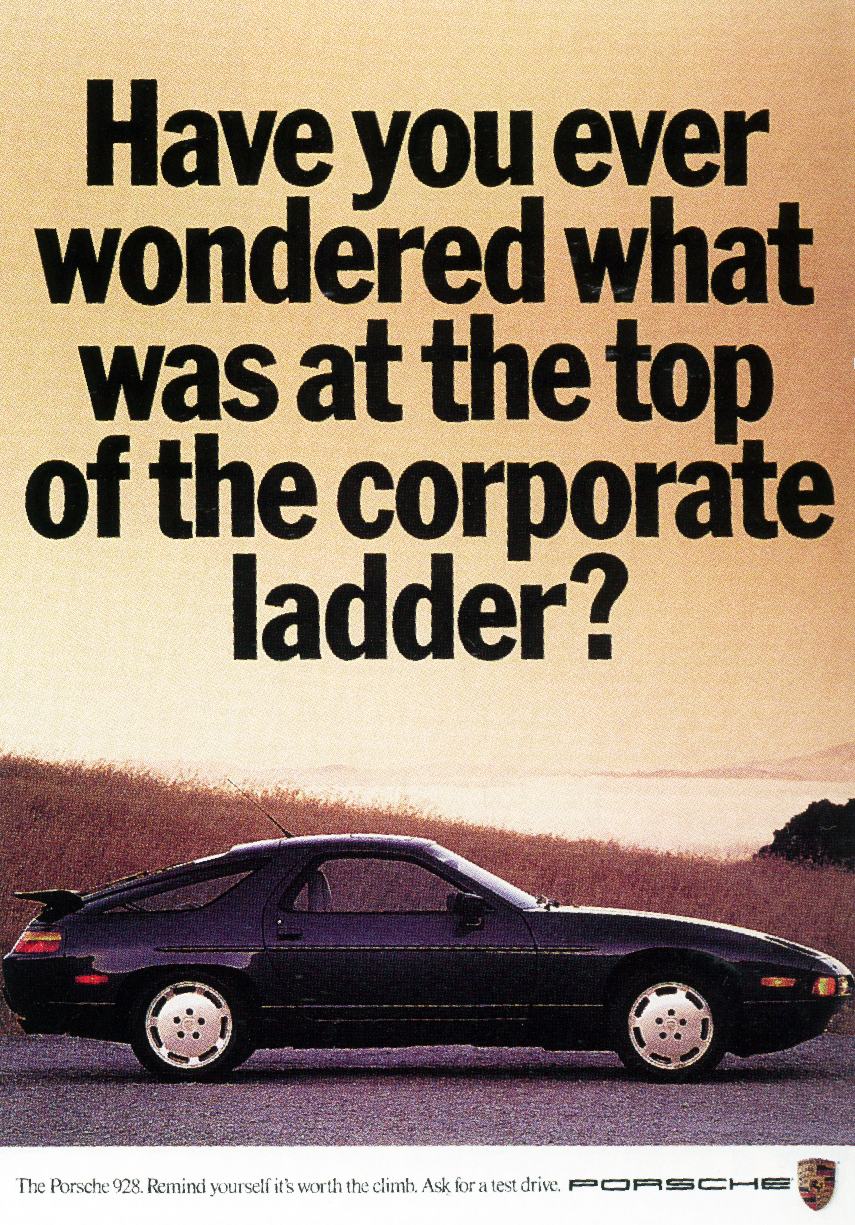
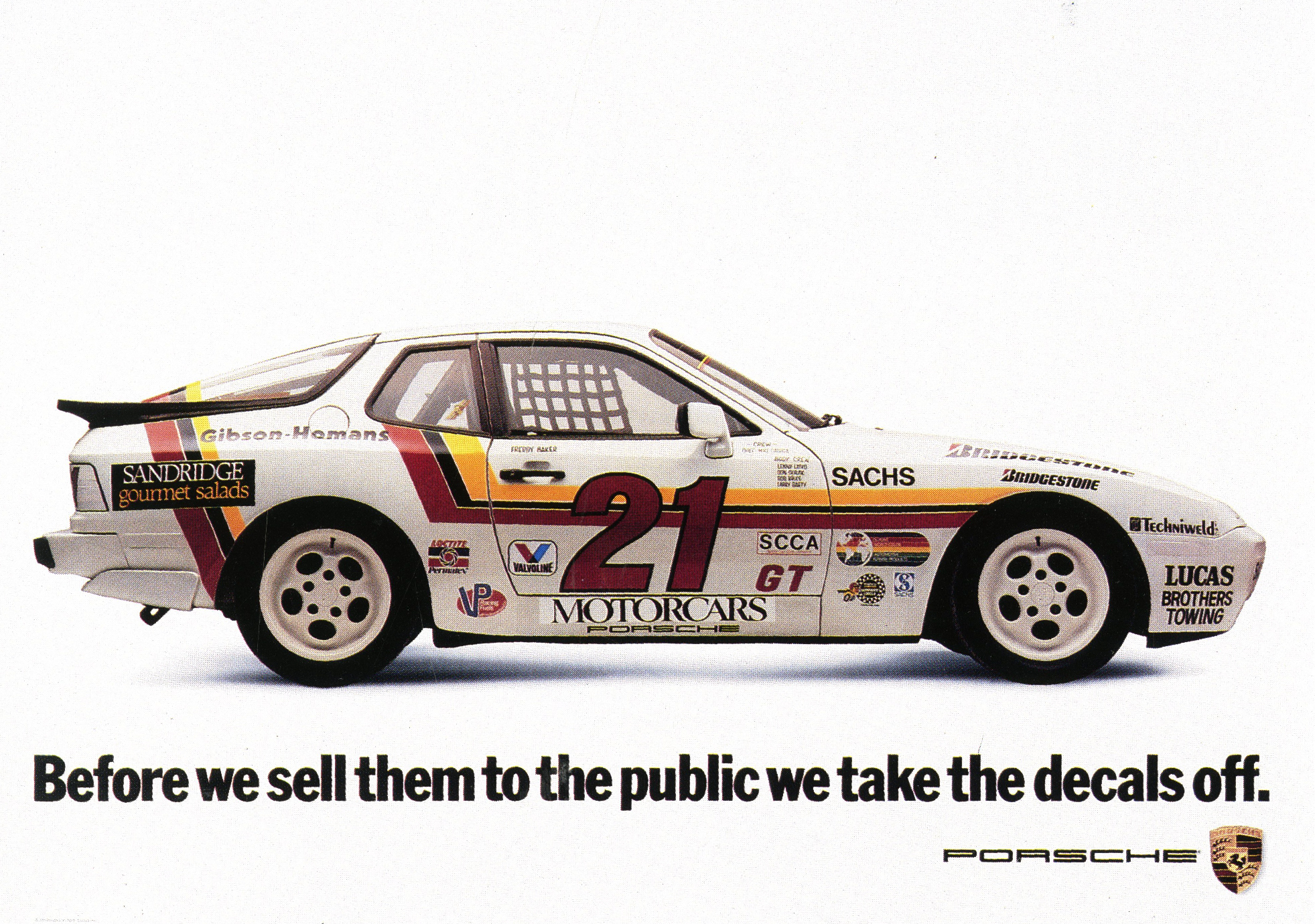 Porsche’s small ads were better than other cars big ads. Did the senior creatives work on the tiny ads as well as the big stuff?
Porsche’s small ads were better than other cars big ads. Did the senior creatives work on the tiny ads as well as the big stuff?
The smaller space ads were done by the kids – the junior writers and art directors. In my days, the copy kids were myself and Jamie Barrett (founder and owner of Barrett sf).
But we didn’t care.
Our goal was to make everyone wish they had received the assignment instead of us.
Jamie and I have a lot of big awards from small assignments.


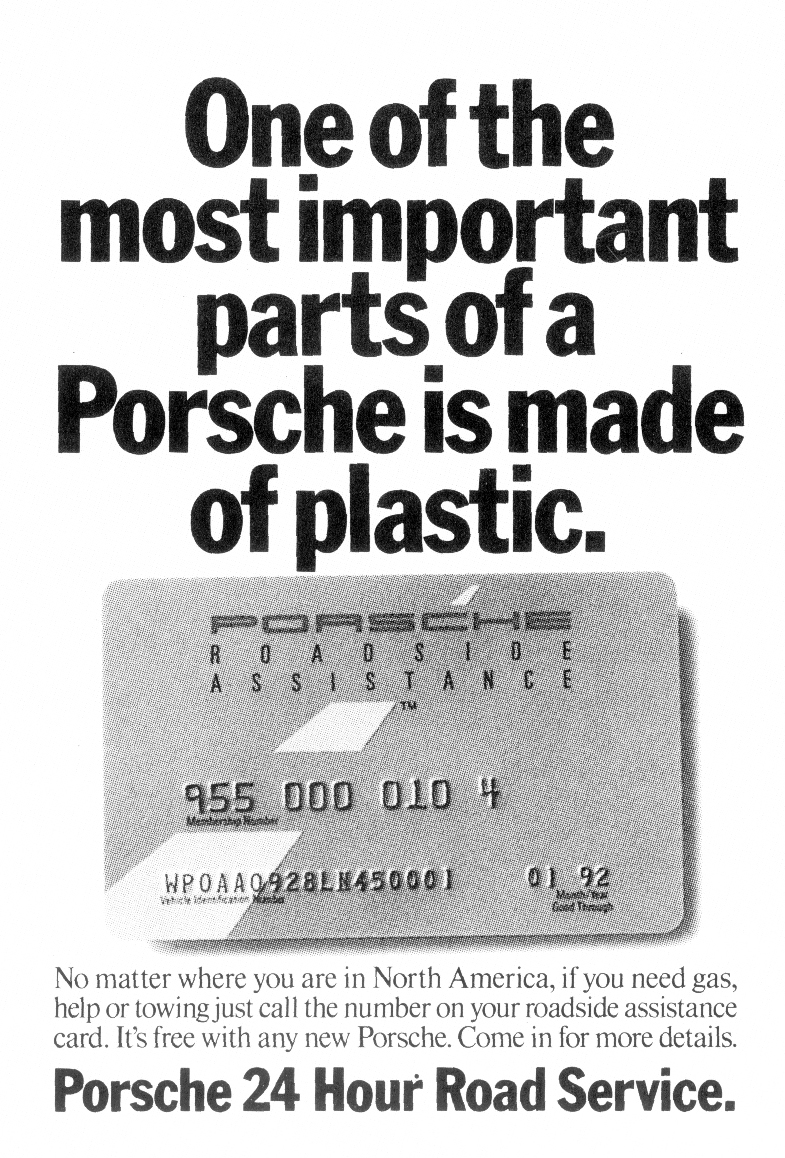



One of your most famous Porsche ads isn’t an ad for Porsche?
Even though Joe Sciarrotta (my partner who founded The Leap Partnership with me) and I didn’t like “fake” ads – you know, the ones for dentists and dog groomers – we had done our share of them.
At any rate, as we got older, we decided the only good ads were ads that were created on behalf of real clients and that solved real problems.
As one final hurrah, we thought we would show the world how easy it was to win awards for these types of ads. So, Joe said, “Let’s do an ad for my car.” Thus, Joe’s Porsche was born.
We did a series of three ads and placed them in local papers.
We cleaned up. Tons of awards and accolades.
We laughed all the way to the awards stage.
What on earth was the system at FMR – everyone seems to be swapping partners week by week?
To be honest, I really don’t know.
I think people were paired up by many things: tenure, level of opportunity, category knowledge, ability to get along, availability, and Tom’s general gut feeling.
I still have no idea how I got to be the lucky one to get chosen to be his understudy on Porsche and The Children’s Defense Fund, but I am eternally grateful.



The FMR/Fallon McElligott/Fallon work just reeks of people enjoying themselves.
Was that the vibe day to day?
It was like working at a comedy club.
I couldn’t wait to get to work every day and be part of the hilarity and hijinks that ensued.
As you walked down the halls there was a different conversation or bull-session going on in each office.
You just had to choose which one to be a part of.
I remember walking down the hall one day and hearing Mike Lescarbeau declare out loud to no one in particular, “Damn, everyone here is so fucking funny.”

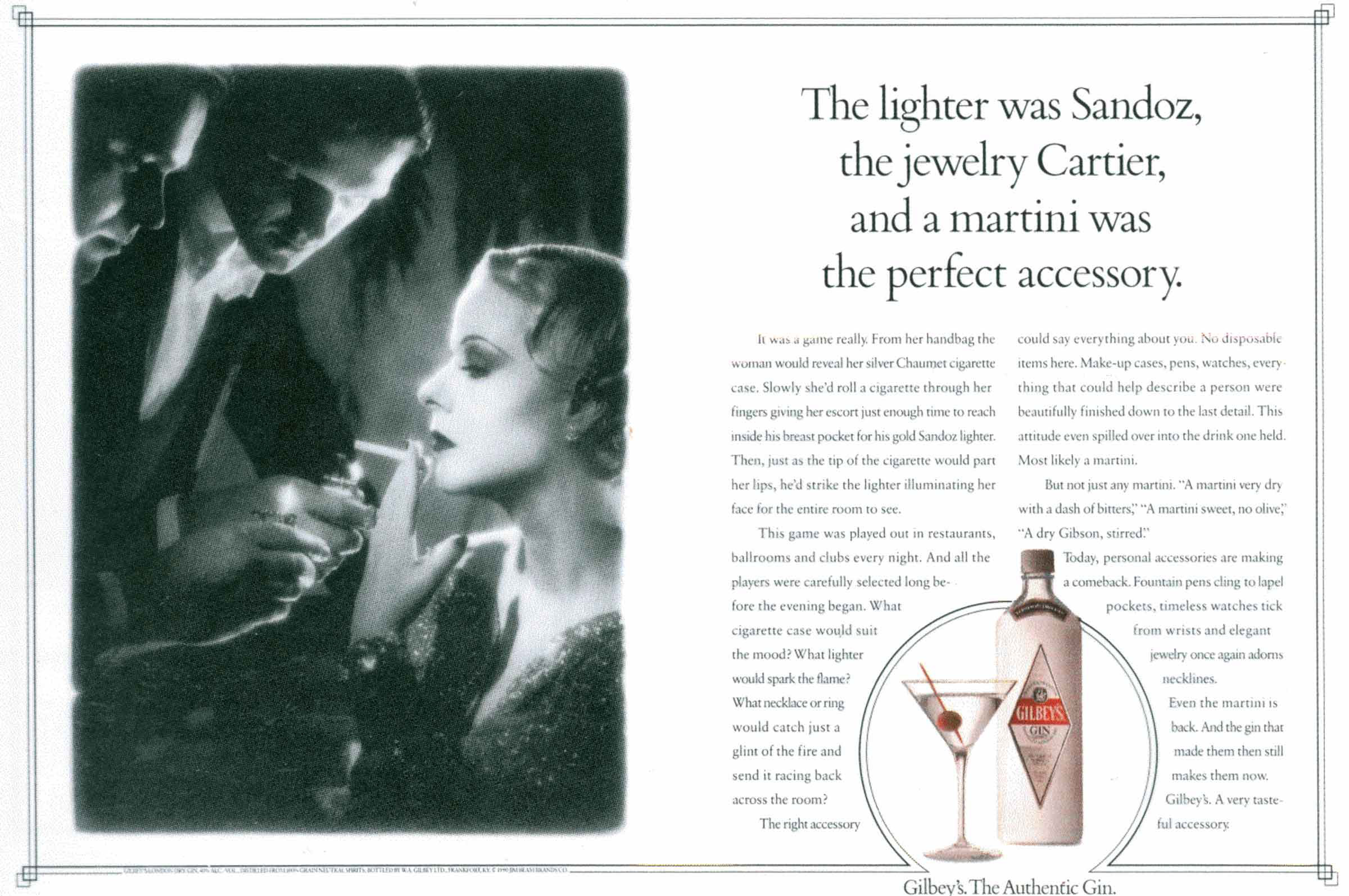

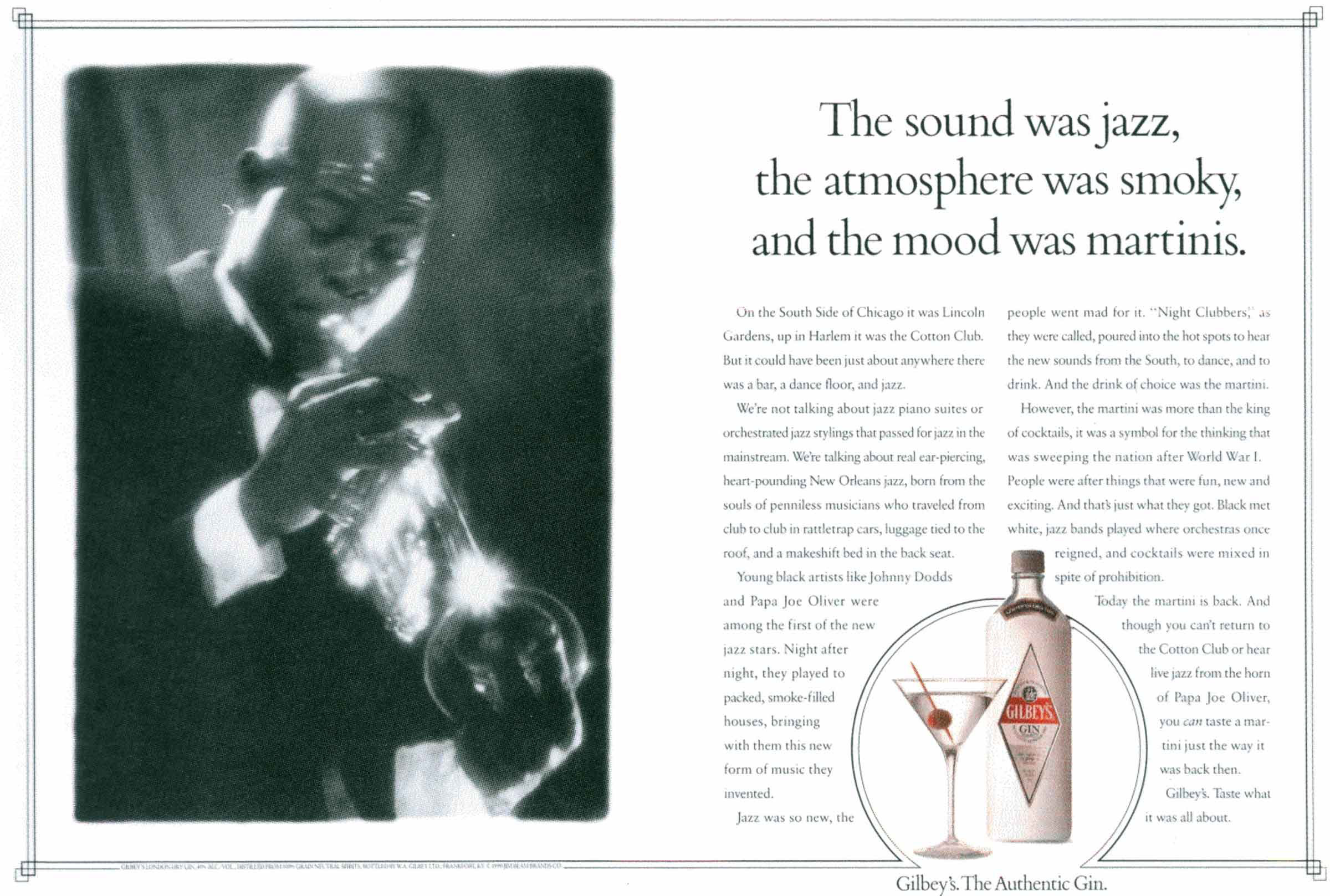
Which writer has had the most influence on your work?
Hands down, Tom McElligott.
His intelligence, his wit and his writing ability influenced my entire career.
However, there were two others not far behind.
Neil French.
In fact, Joe Sciarrotta and I were so smitten with his genius we named our agency, The Leap Partnership, in the style of The Ball Partnership, Neil’s agency.

He has written so many incredible things but this one I still think of to this day…
And 2), Hal Riney. I have always said I learned print from Tom and TV from Hal.
I can’t think of two better mentors for a copywriter to have.
What did you learn from Tom?
Tom never “taught” me things per se, but the best teachers lead by example.
It’s up to the students to pay attention. In this manner, Tom taught me how to write with intelligence, style and thoughtfulness.
In later years, Tom became a member of my board of directors and he taught me about business.
The best lesson I learned at Fallon McElligott was one that both he and Pat Fallon taught me together.
They always said, “Never talk about yourself. Let your partner do that.”
To the press, Tom always spoke highly of Pat’s tenacity and intelligence, while Pat always talked up Tom’s creative mind.
The words they used were not only believable, because they were true, but Tom and Pat never sounded arrogant that way.
This allowed two legends to grow even more legendary.


 Who’s the most talented person you’ve come across in the business?
Who’s the most talented person you’ve come across in the business?
Wow, loaded question.
There is no “most talented” person because each person brings their own talents to the table in pursuit of a solution.
It’s a collaborative business and you learn by taking the best from each.
However, I can name my idols: Bill Bernbach, Tom McElligott, Tim Delaney, Neil French, Hal Riney, Roy Grace, Julian Koenig, Helmut Krone, Joe Sedelmaier, Albert Lasker, Claude Hopkins, Guy Day, Lee Clow, Tom Monahan, Patrick Kelly, Ed McCabe, Steve Jobs, Phil Knight and David Ogilvy.
(Mmm…he missed David Abbott, I wonder why he hates David Abbott so much?
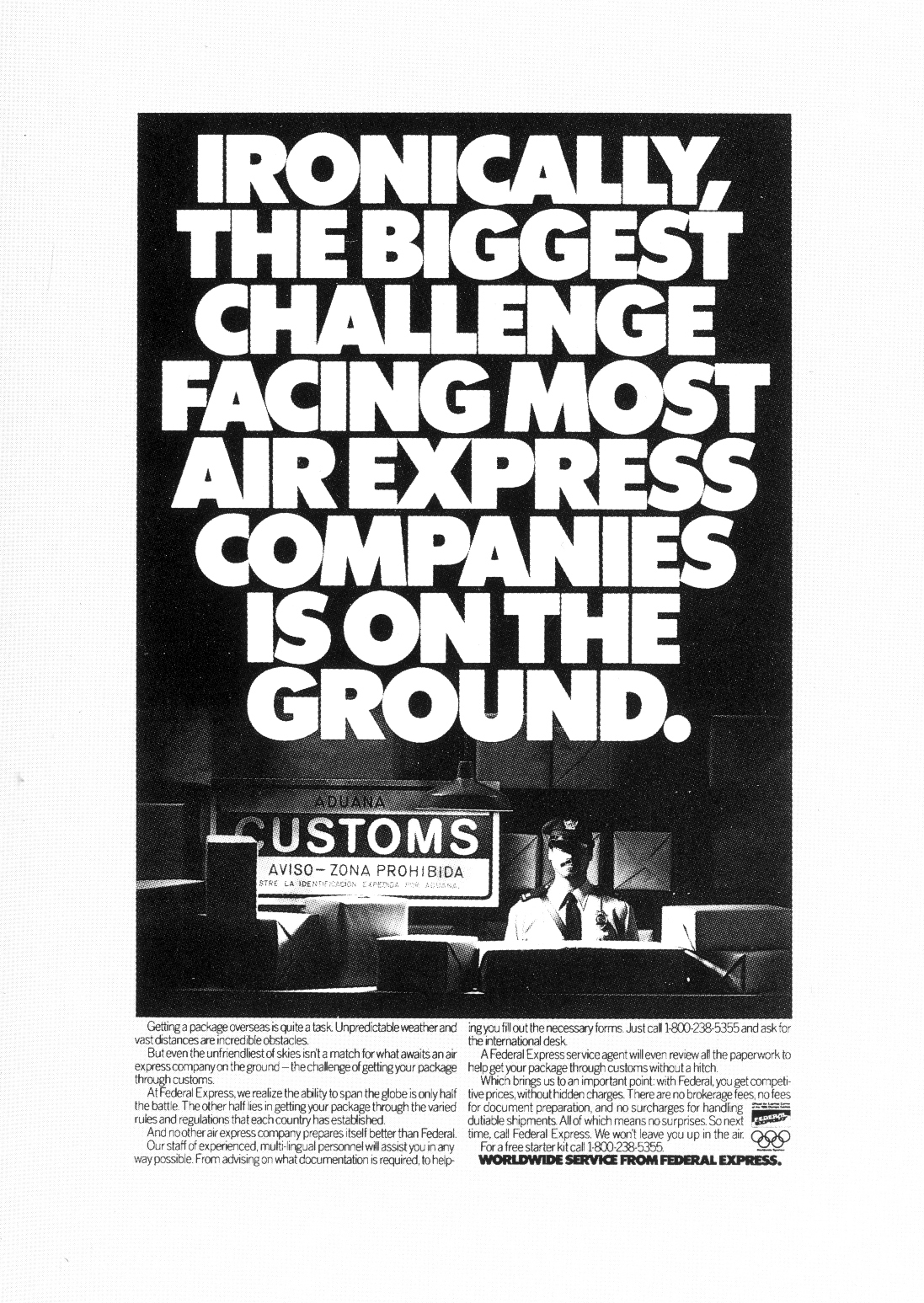
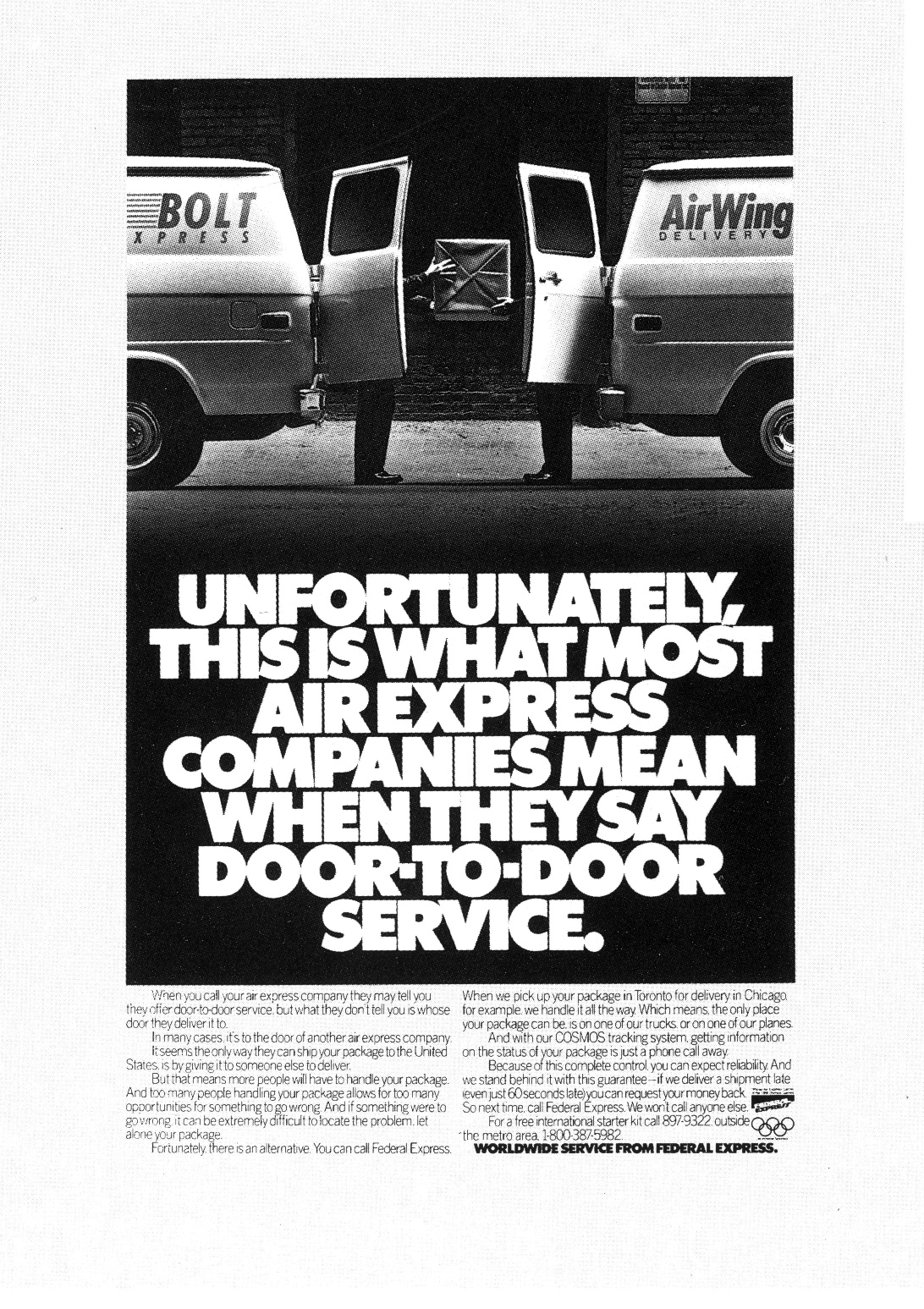

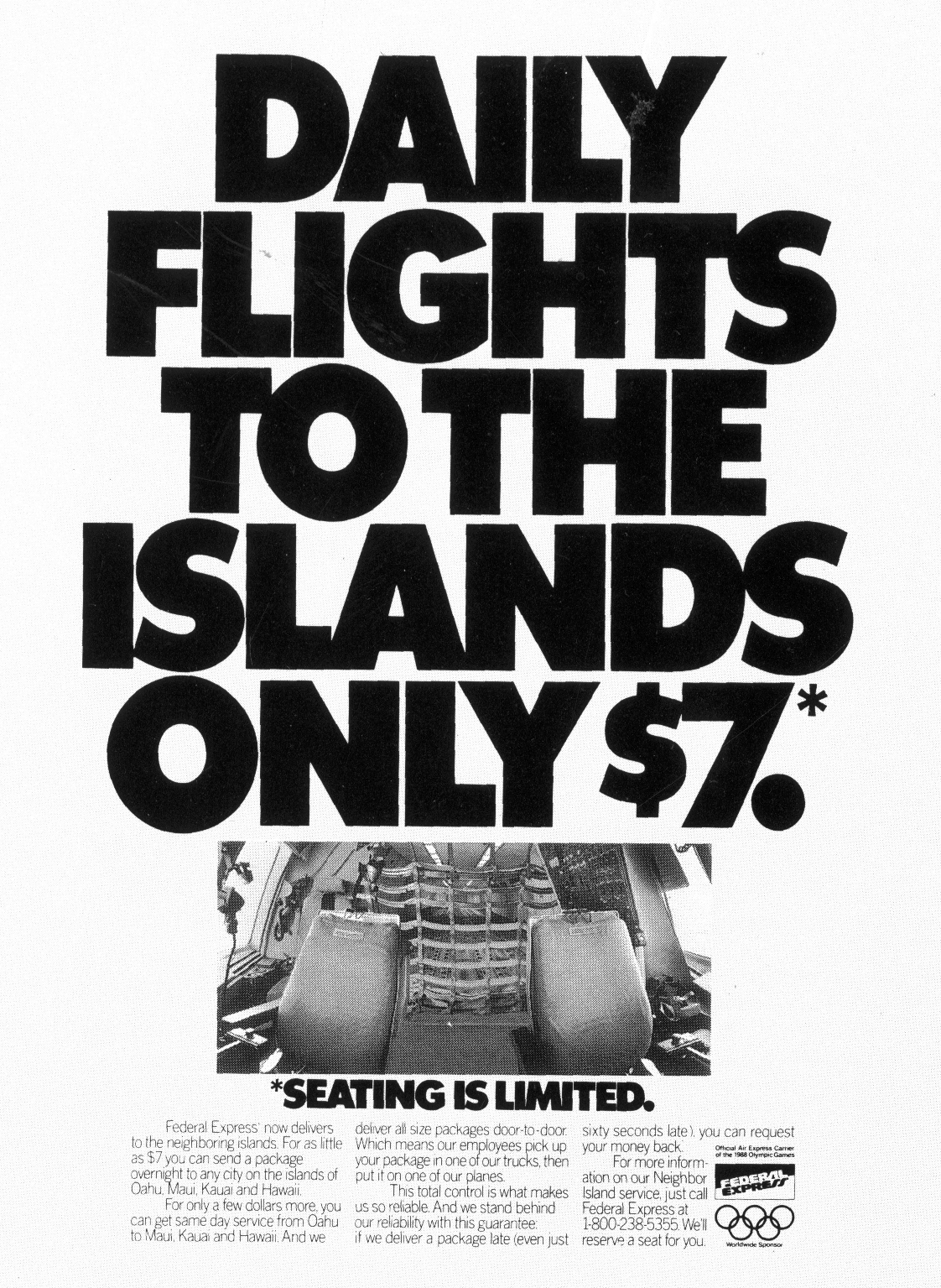

So, DDB, did it feel like the DDB you’d read about – little Bobby Levenson popping in your office to borrow some Tippex, the sound of Roy Grace tearing up people’s work in the distance?
DDB Chicago wasn’t really the DDB of New York – the historic agency you think about.
It was more a legacy agency of Needham Harper and Steers, the agency they merged with in 1986.
It didn’t have that same feeling or DNA that you read about with Bernbach and his disciples.
A hike in salary but a drop in quality?
No, we did a lot of great work at DDB.
We sold a lot of our client’s products, won a lot of awards and made history with some of our work, so it wasn’t about that.
It was about doing something more.
About having a point of view that wasn’t being served in the marketplace.

Why leave?
Joe Sciarrotta and I had a good thing going at DDB Chicago, but like most restless creatives, we always knew we wanted to start our own place.
But we weren’t going to open just another agency for the sake of putting our names on the door.
We wanted to create something that was bigger than people the people who ran it.
At that time, there was a lot of noise being made by media agencies unbundling the buying process and CAA trying to woo clients with a talent strategy.
Joe and I read the industry tea leaves and decided our point of difference would be to unbundle the creative process: to give clients more brains for the buck.
As one of my partners said about our model: “In the air force there are a hundred people who are assigned to support each plane – just to keep it up in the air – but only one pilot.
With Leap, we’ve flipped that model, we give you less support people and more pilots.”
When we launched The Leap Partnership in September 1993 we took out an ad in Advertising Age magazine that spoke to how we were different.
And like all good advertising, we chose one end of the spectrum and then we picked a fight with the leader.
We were out to make more than ads; we were out to make a difference.
The Crain ads are credited to Gier/Gordon Chicago – short-lived agency or freelance gig?
Gier/Gordon was a freelance gig that Mitch Gordon and I operated.
It was a chance to do some things that we wanted to do.
Mitch and I had worked together at Hal Riney and came to Chicago together to work on Audi at DDB.
What surprised you most about running your own shop?
I was surprised to learn that everyone (agencies, clients, lawyers, accountants, Wall Street…) are all making it up as they go. There is no formula or divine solution.
What did you enjoy most about being your own boss?
No question: the shared victories. Advertising is a team sport and when you win together it’s like winning the Superbowl –except colored confetti doesn’t drop from the rafters.
What did you enjoy least?
When you are suddenly responsible for the salaries and well-being of your employees and the direct satisfaction of your clients, it can be a big load to shoulder.
Every time the phone rang we never knew if that was the beginning of something, or the end.
People imagine when you start an agency you have more freedom when it comes to what work you run. It’s partly true, but I found being responsible for others meant that I had less freedom.
Did you feel freer at FMR or the Leap?
No question, I felt “freer” at Fallon.
As an employee, all you have to do is create greatness.
If you know how, that’s the easiest thing to do in this business.
The rest is a struggle.

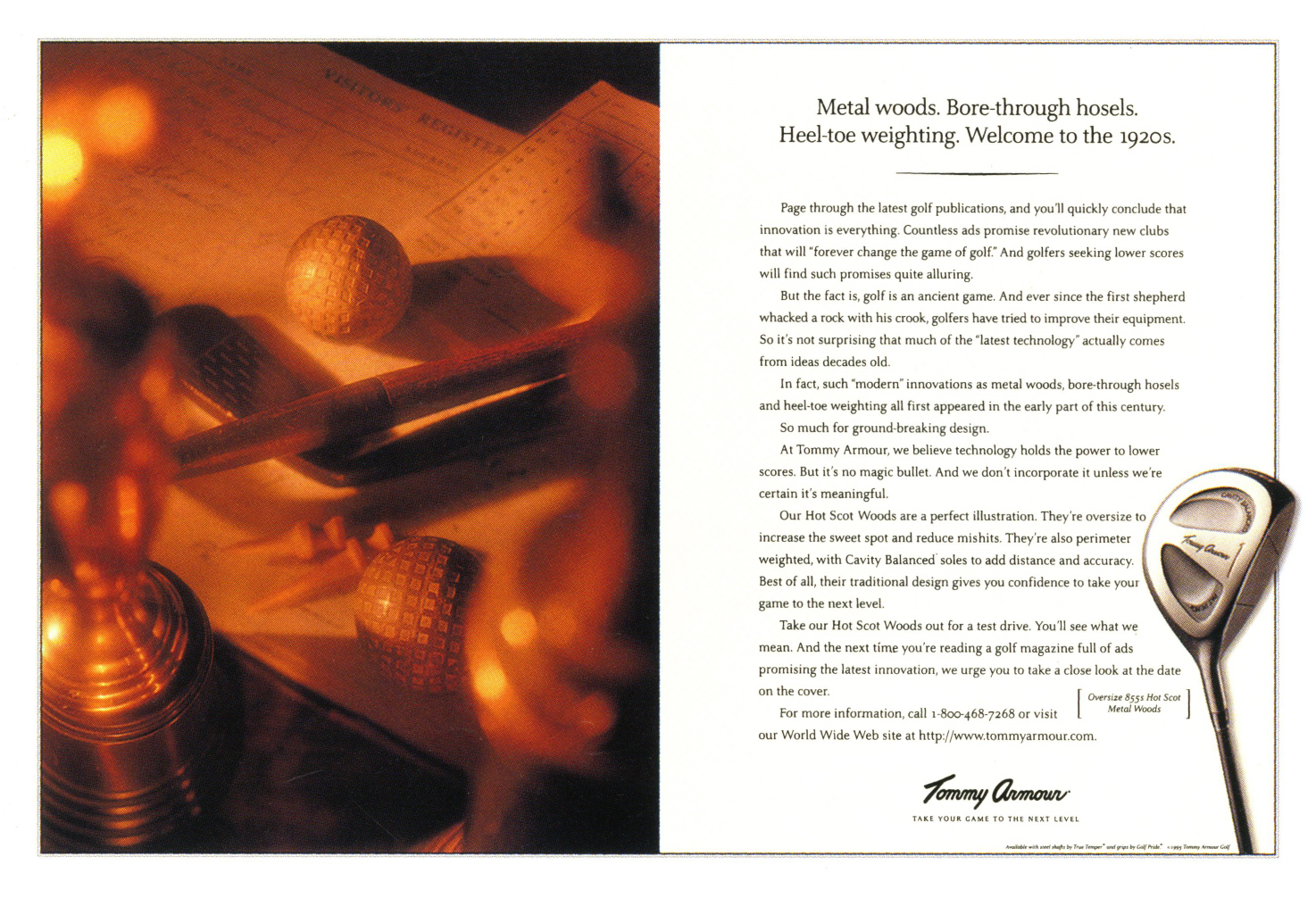

How did Tom the advisor differ from Tom the CD?
As you know, both Tom and Guy Day served on our board of directors.
This was an amazing opportunity to learn from two legendary admen.
The beauty of Tom was that he never varied.
He was all about the work and nothing but the work.
On many occasions, he would say to me: “I have no idea what you are doing.”
Of course, neither did we.
We were making it up as we went along during a time of incredible change (the birth of the Internet, the advent of digital advertising and the beginning of e-commerce).
Which Leap campaign are you most proud of?
Probably our work for US Robotics. It was a campaign called “Legends” and used iconic figures like Stephen Hawking, Steve Wozniak and Sally Ride to endorse their modem (yes, it’s that old).
I liked it because at the time it felt right to be using them as spokespeople.
Your campaign for Kiwi lit up Twitter last year, people were shocked that someone would write that much copy in 2021?
This was a campaign that Joe Sciarrotta called me in to help out on.
It’s a wonderful blend of so many talented art directors, designers, copywriters, photographers, and, of course, a wonderful client.
The copy assignments were divided between myself and Mark Bruker.
I think we had about two days to write 6 ads, so we cut the lot in half and got to work.
Personally, I love writing long copy. If it’s good enough people will read it. And much of it was good.
Especially Mark’s copy for the Muhammed Ali ad.
If you read it, it reads like a boxing match. With quick punches, dizzying uppercuts and pounding body blows. It will leave you breathless.
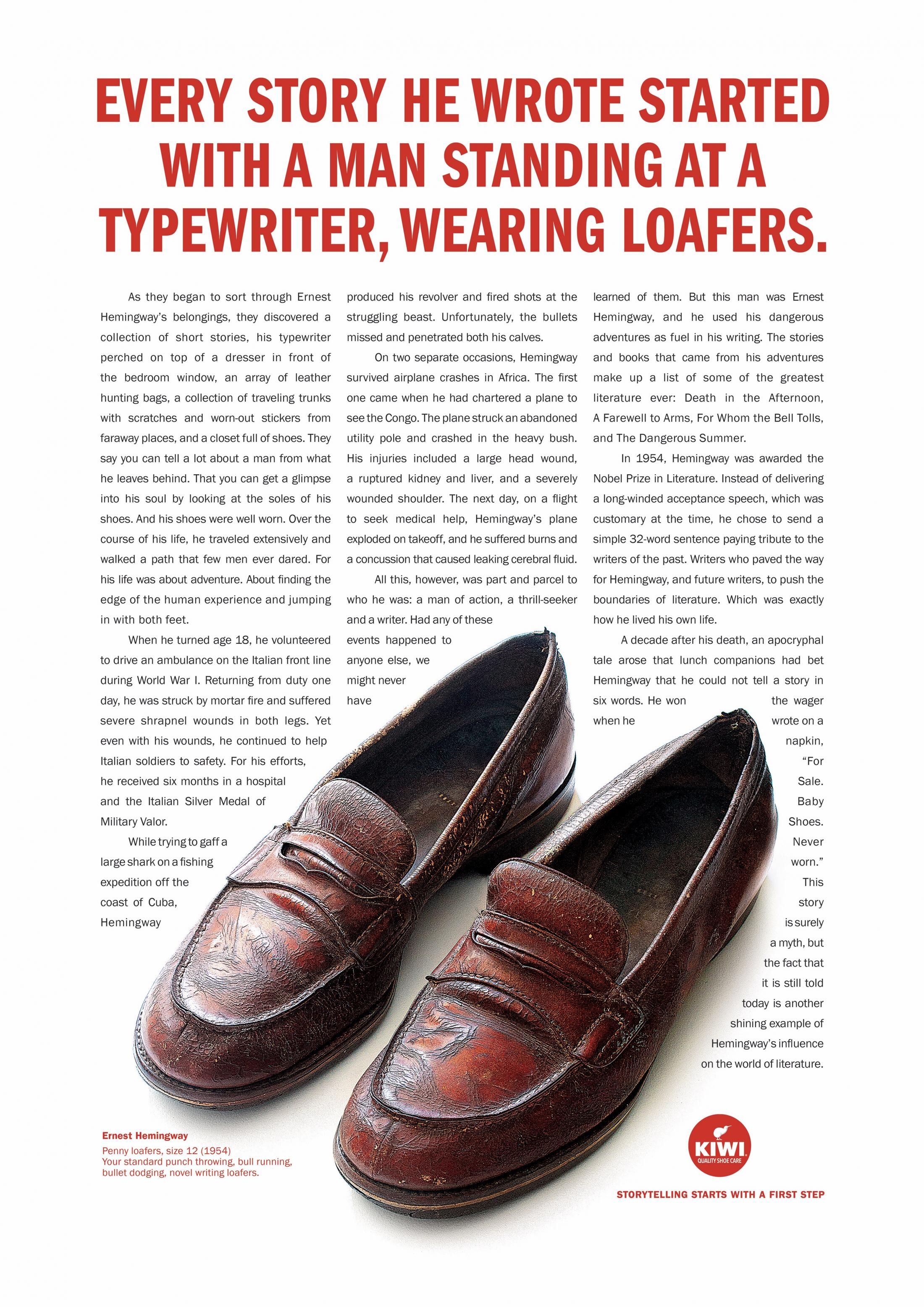



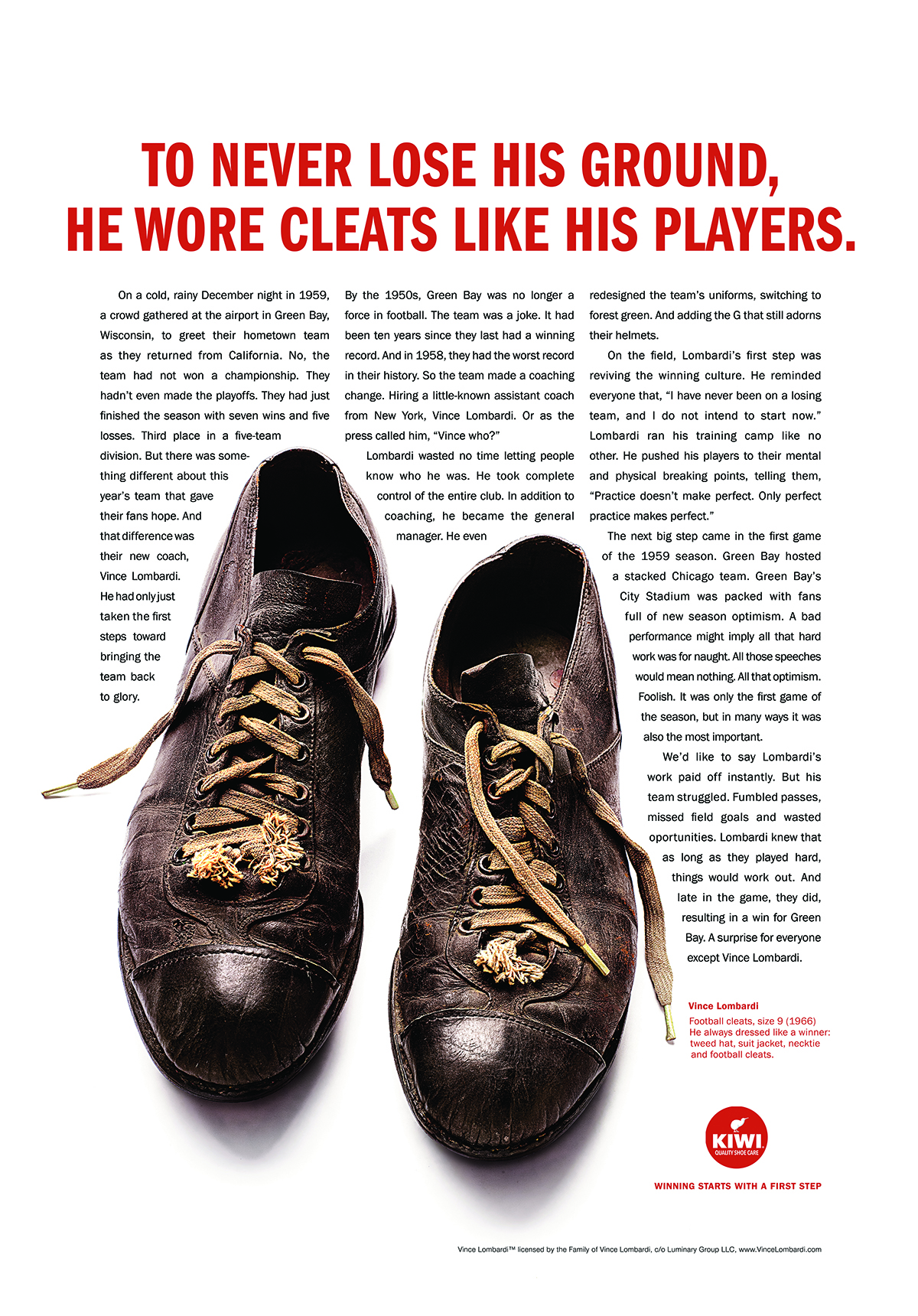

What is your favorite campaign?
Of course, there are many (Nike, Avis, Apple, etc) but it all begins and ends with the original Volkswagen campaign from DDB.
I won’t go into it here, but if you don’t study the simple brilliance of why it works on all levels, you will never understand how to incorporate that thinking into your own work.
What’s better about advertising today?
Data has opened up a whole new world of personalization.
And I don’t mean that it allows us to put someone’s name on an ad, although that’s certainly possible.
Data allows us to break down mass audiences into individual people and that gives us a deeper understanding of who we are talking to so we can better craft our sales message.
And, after all, that’s what it’s all about.
Worse?
What’s worse is that data and digital solutions have led marketers away from the one constant truth about selling: “It’s the idea that matters.”
I know that sounds like “Old Man Yells At Cloud” but ads, no matter how they are delivered, are nothing more than door-to-door salespeople.
If you’ve ever sold door-to-door you will understand the importance of engagement, positioning, differentiation and voice.
If not, you ought to try it.
It will change how you craft your message.
Is the role of copywriter more or less important than it was when you got into the business?
It’s funny, people always think in terms of art and copy.
I don’t. I think about advertising in terms of ideas. Ideas are more than transactional tools. Ideas change perceptions, ideas start revolutions, ideas make history.
What single tip would you give a young copywriter working on an up-market brand for the first time.
Understand your brand and write to that voice.
What was the last good ad you saw?
One of my recent favorites is for Rocket Mortgage called “Certain is Better.”
Everything works here. It’s a simple premise, it’s cast brilliantly, it’s shot well and it’s fun to watch.
It’s from a Chicago agency called Highdive which was also a DDB breakaway and reminds me a lot of Leap.
Thanks George.

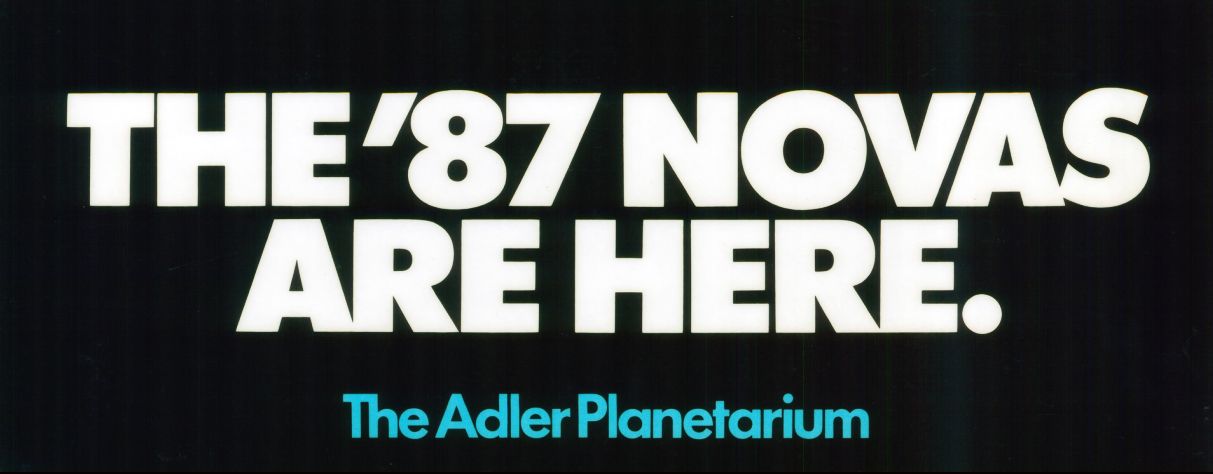

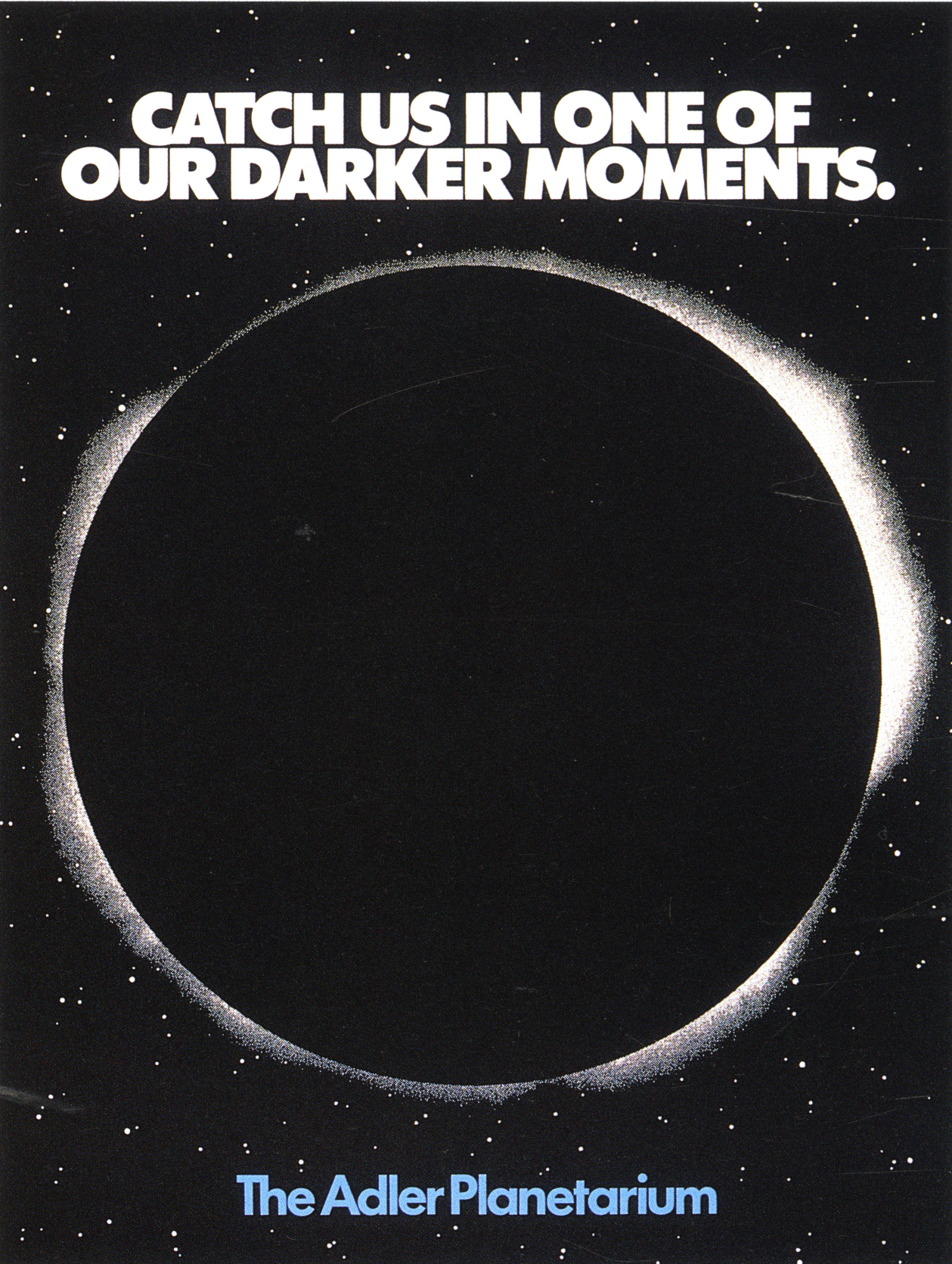
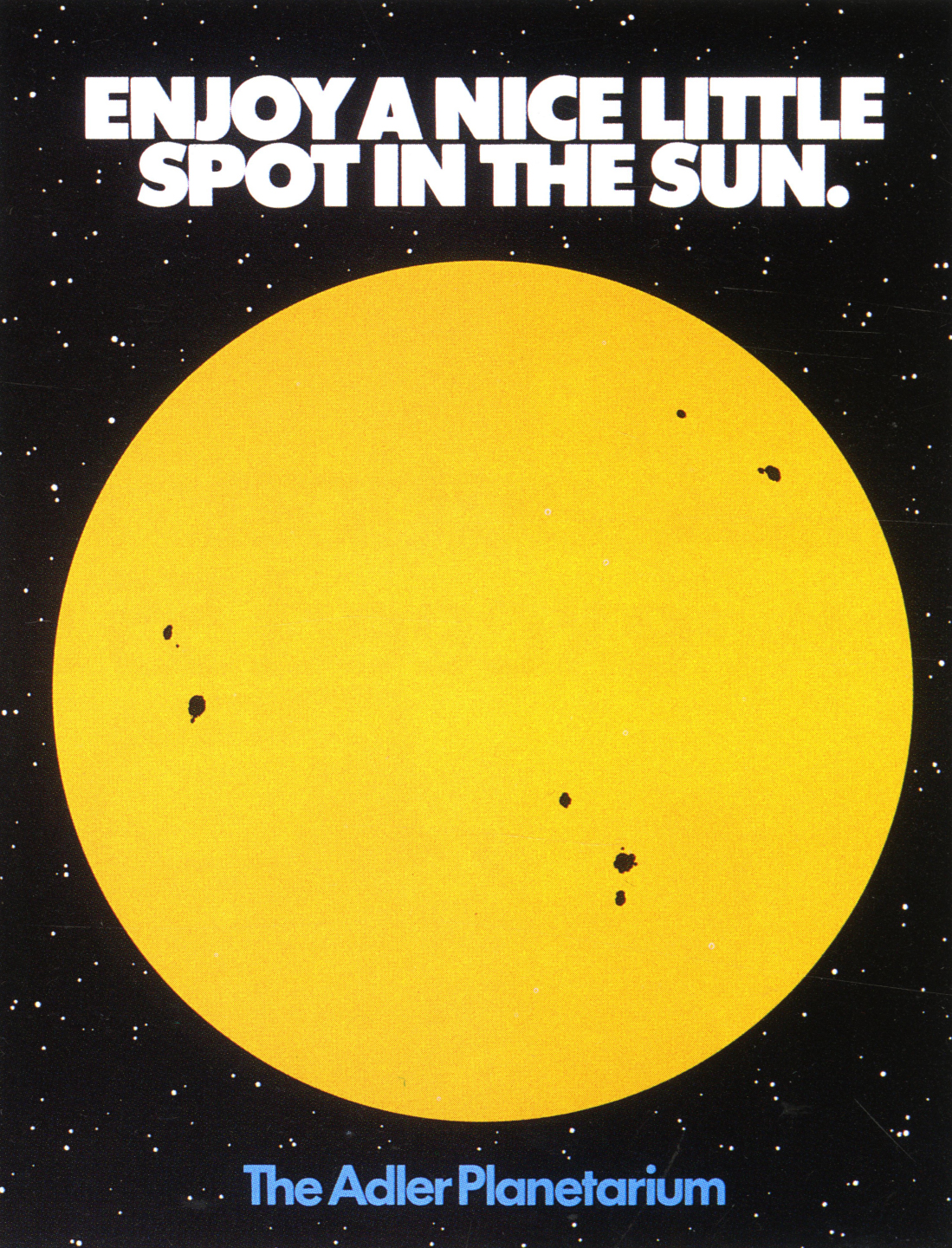
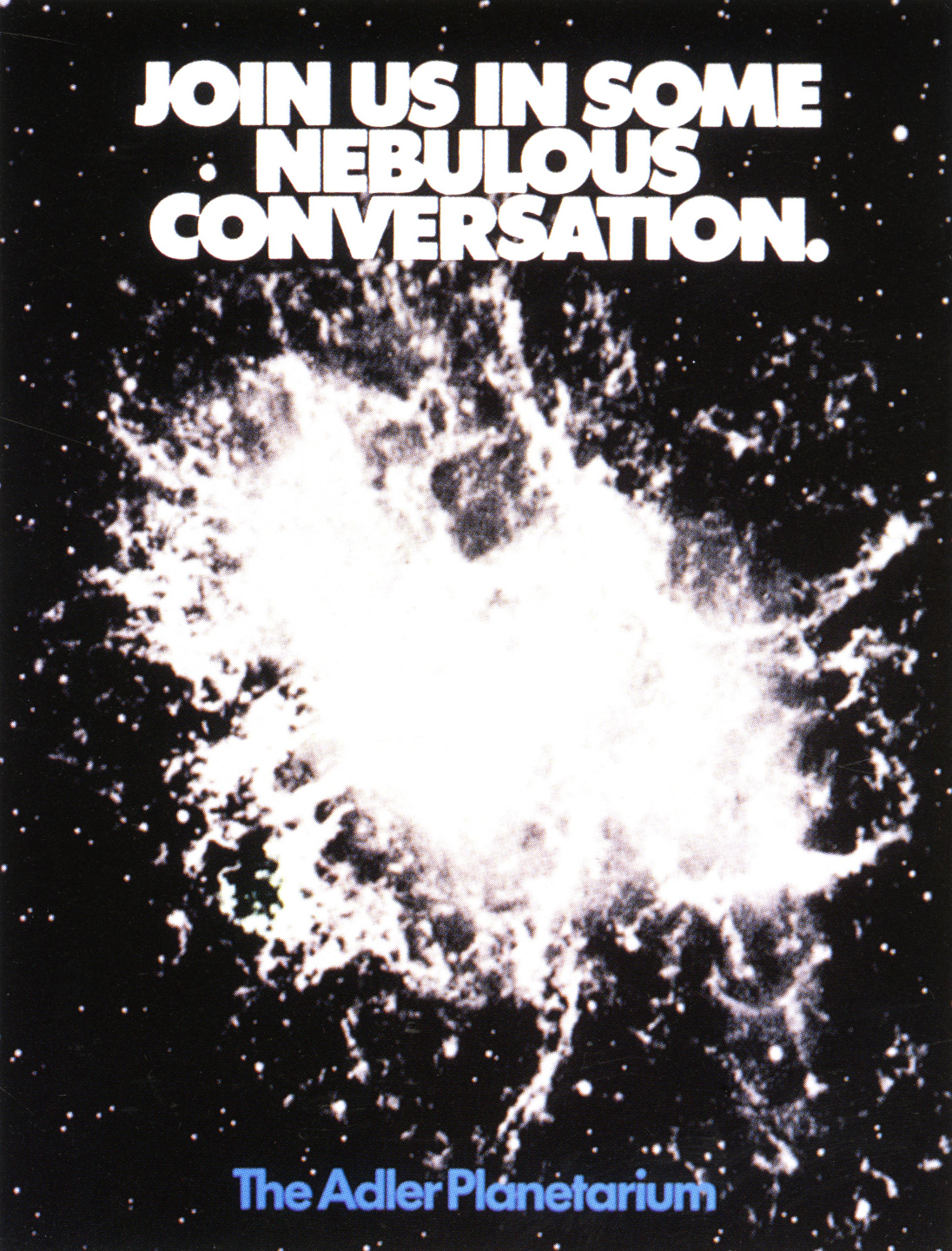


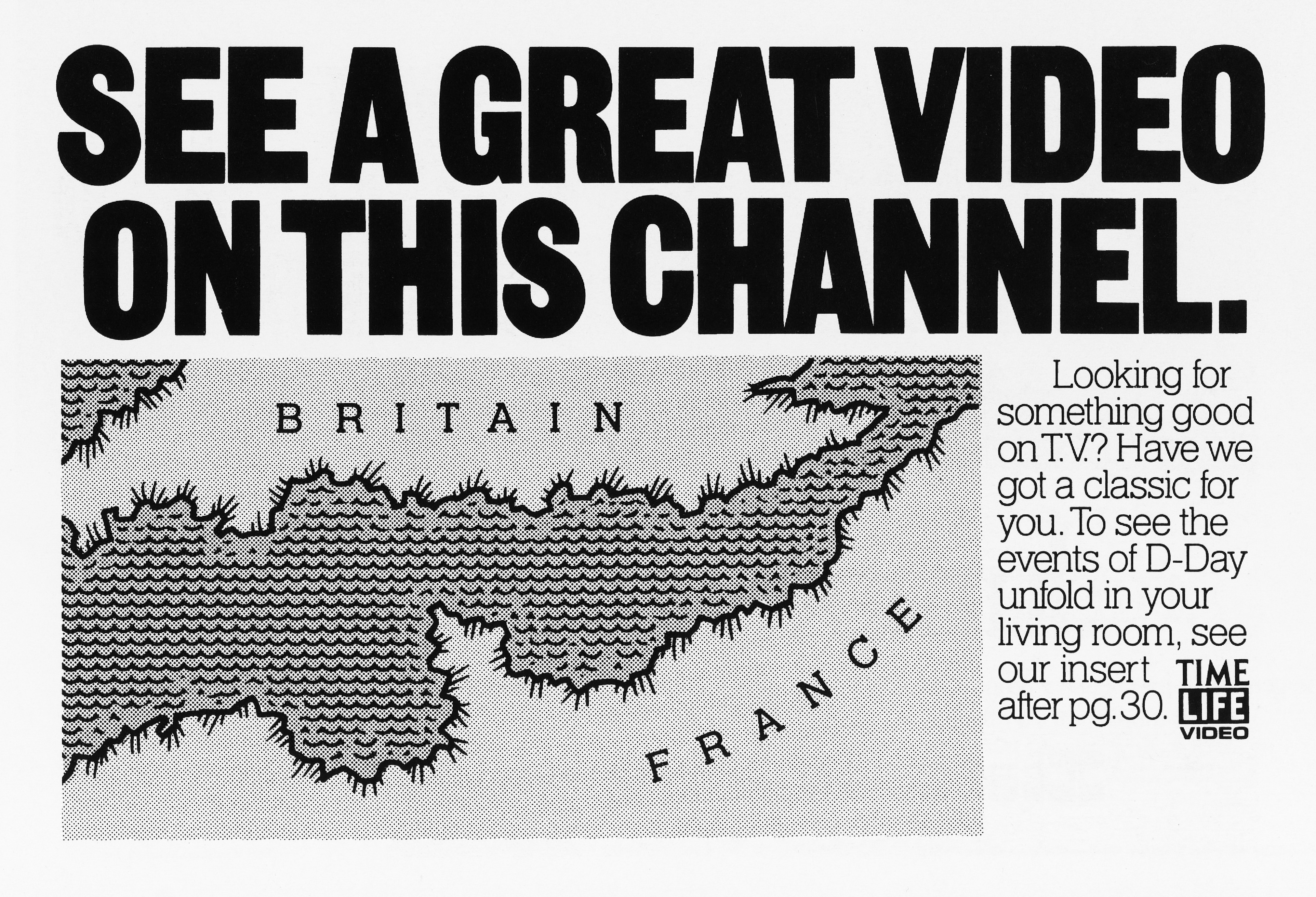

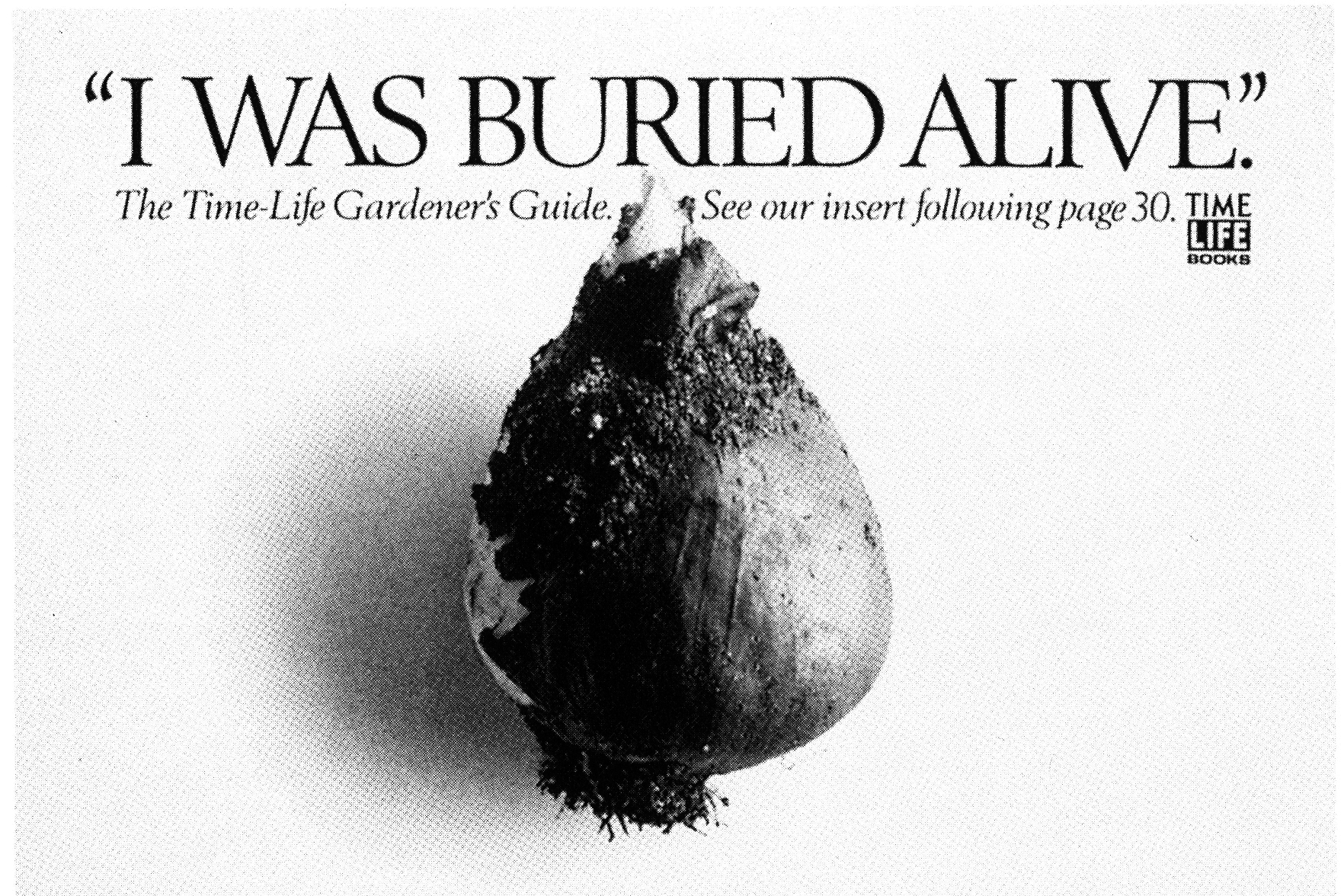








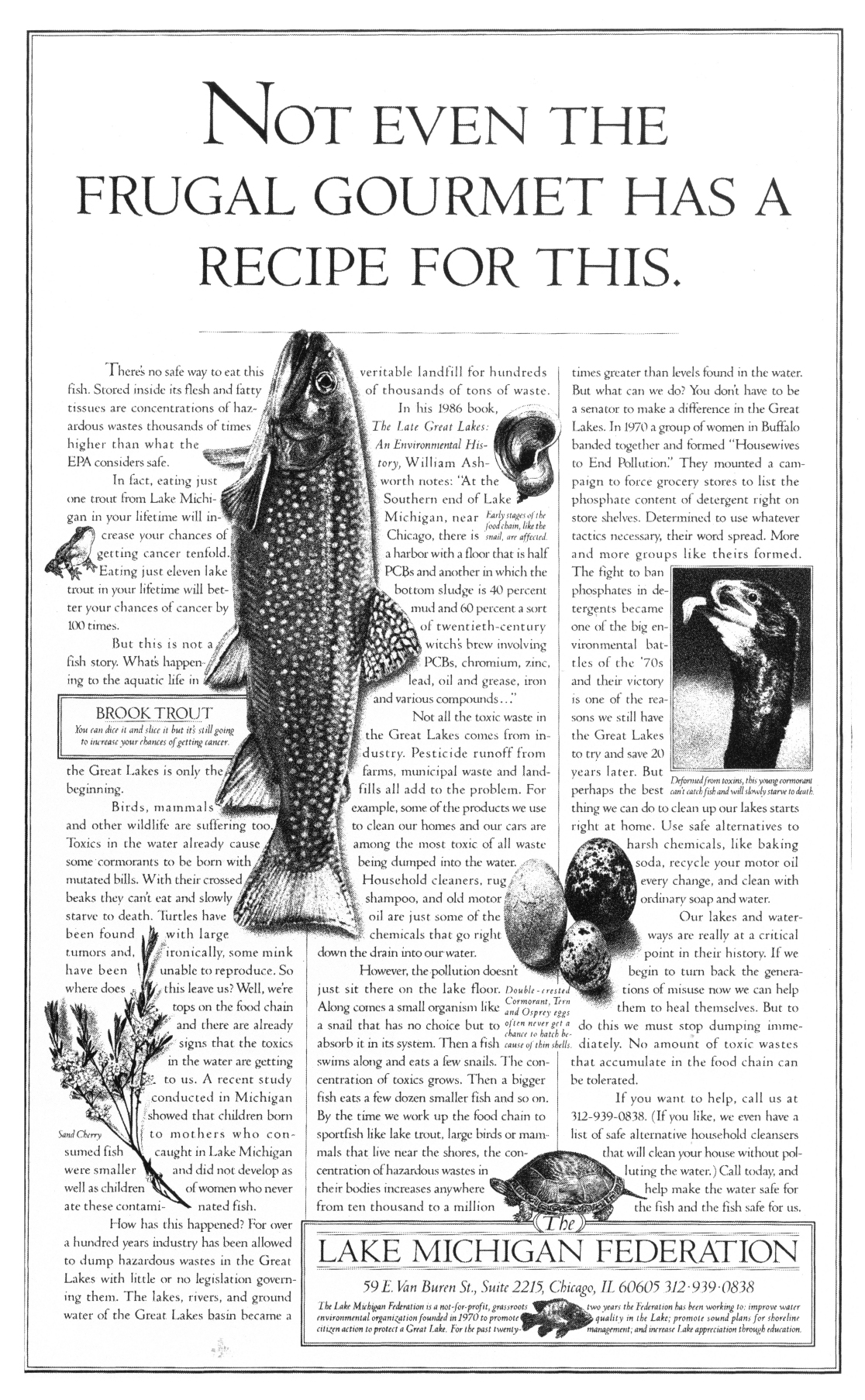


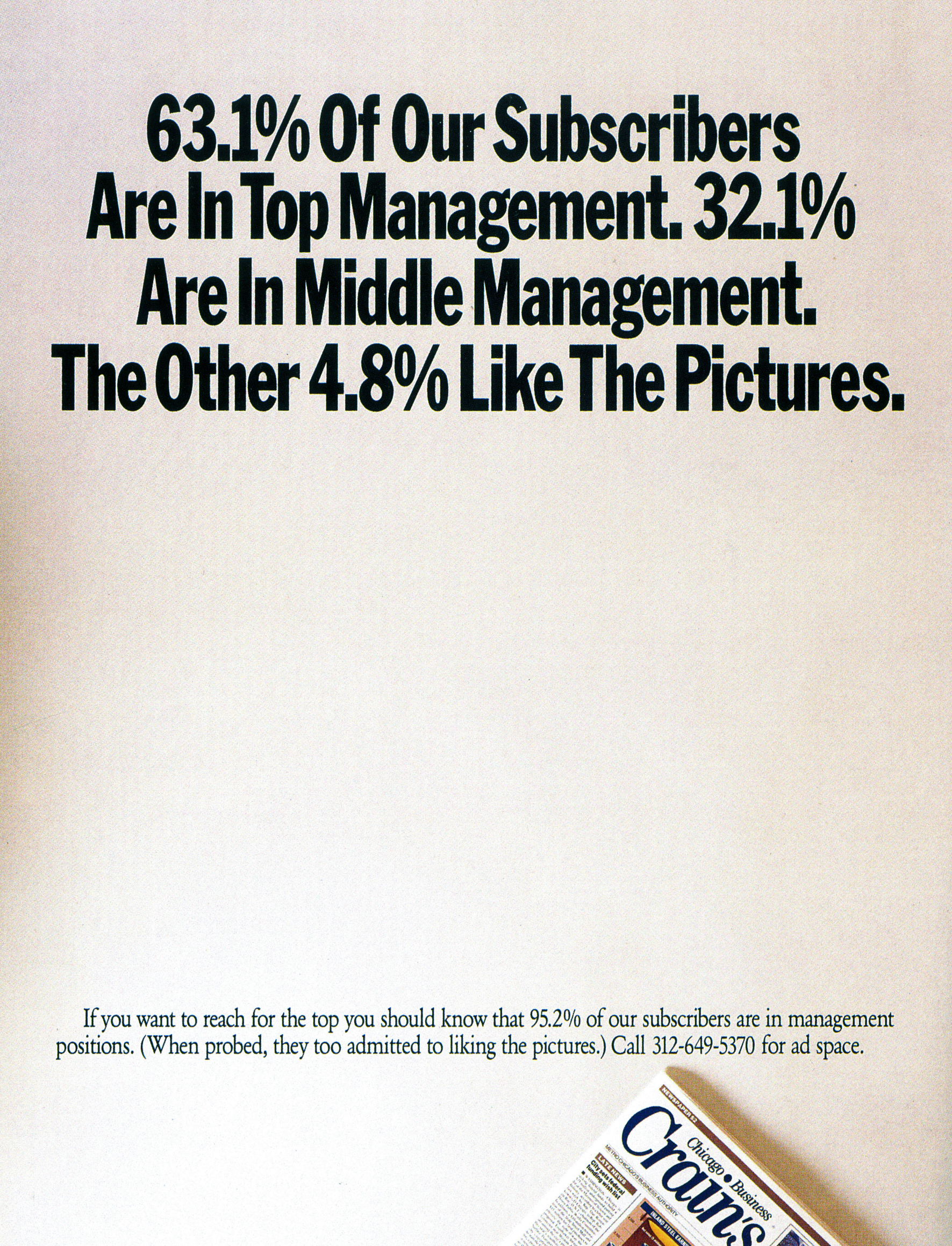

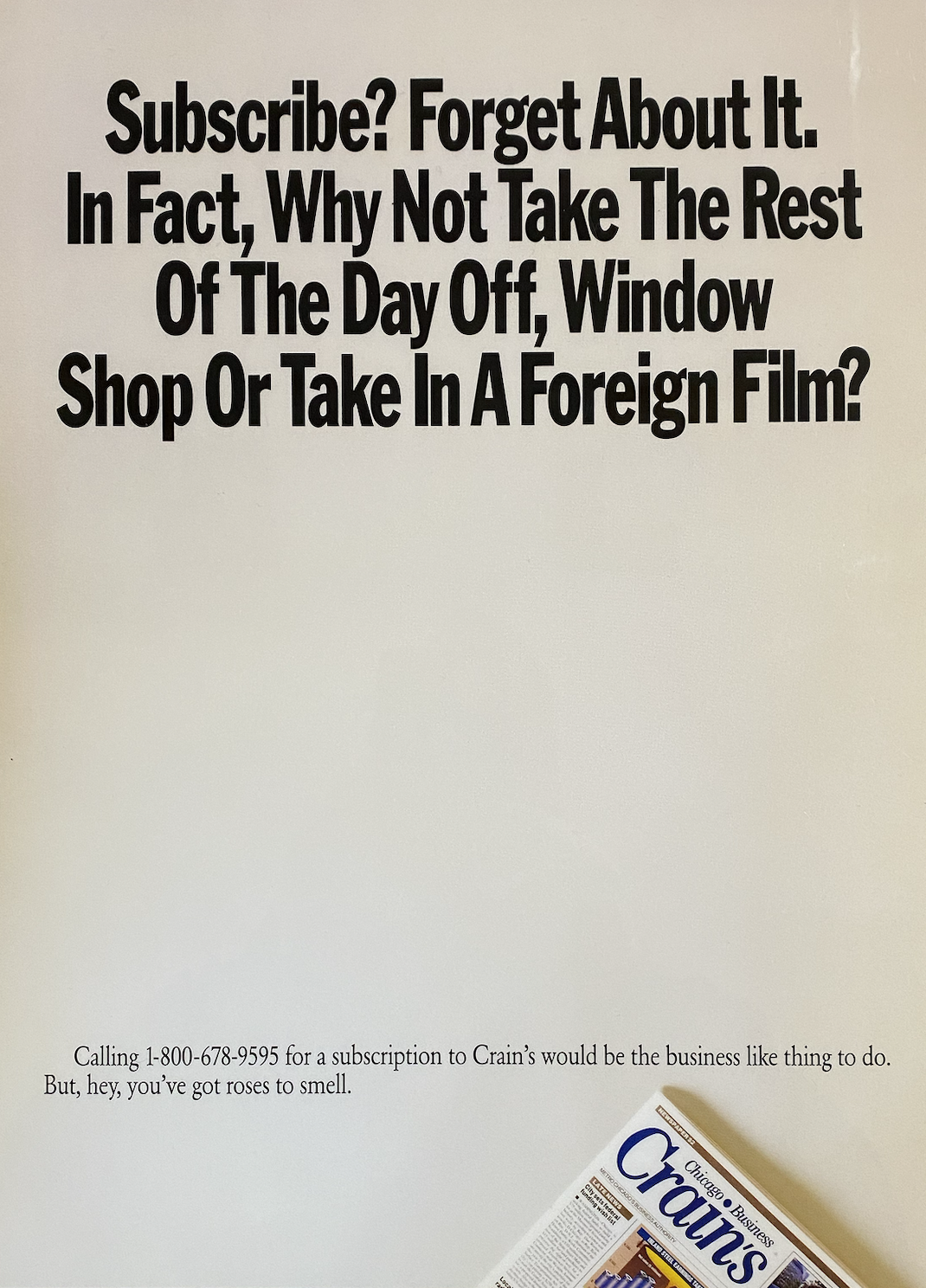



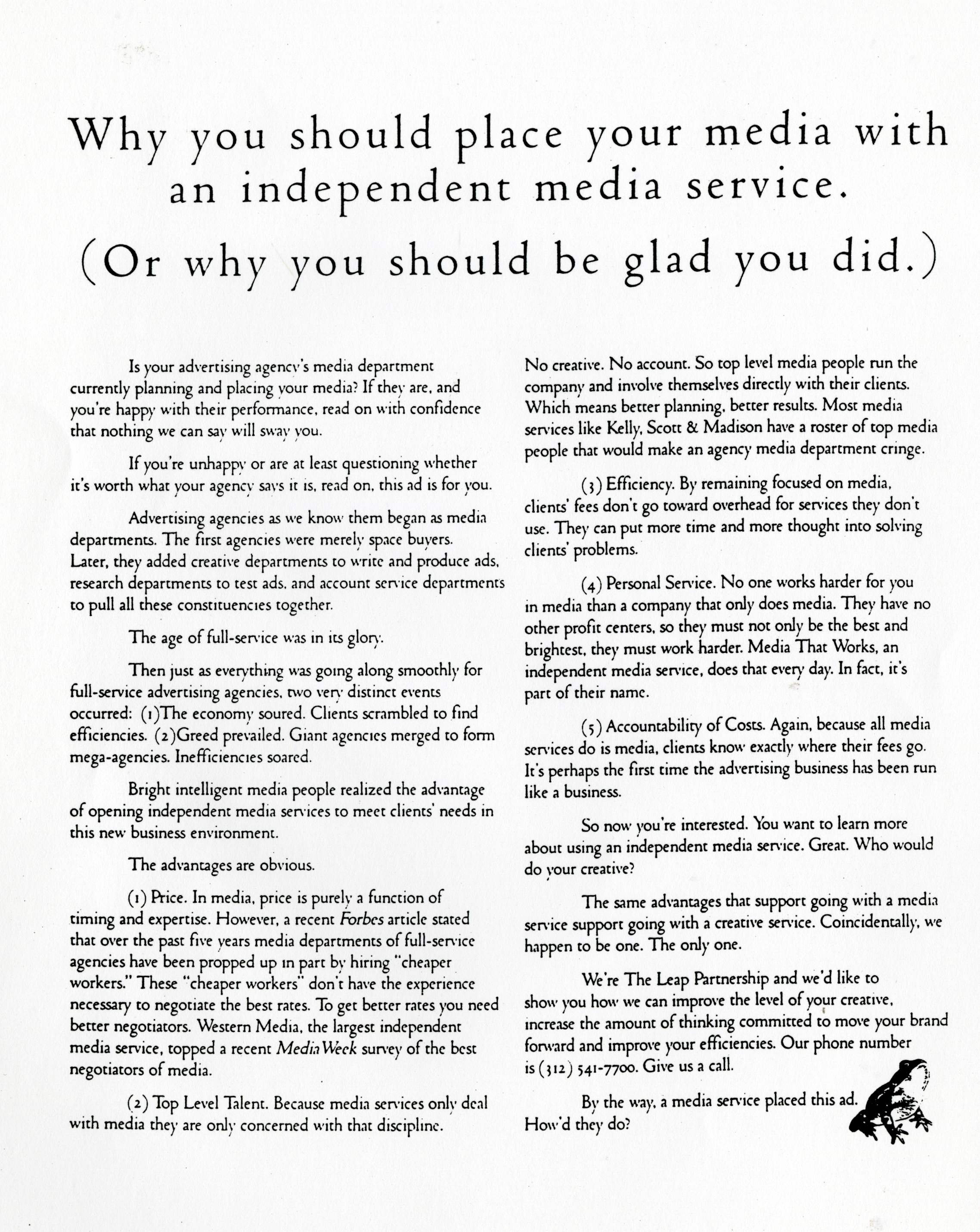



Thanks, Dave. I appreciate the spotlight. And I’m sorry I forgot David Abbott. I adore his work.
Hi Dave, this was so inspiring as always. One question though. George says of the vw campaign, ‘study the simple brilliance of why it works on all levels’. Please let us know if there’s a blog/book that breaks it down. Especially the thinking/process that goes into coming up with ideas that lead to campaigns. Thanks a ton for your posts!
https://www.goodreads.com/book/show/13252989-think-small
here’s the skinny on DDB’s VW campaign:
https://www.goodreads.com/book/show/13252989-think-small